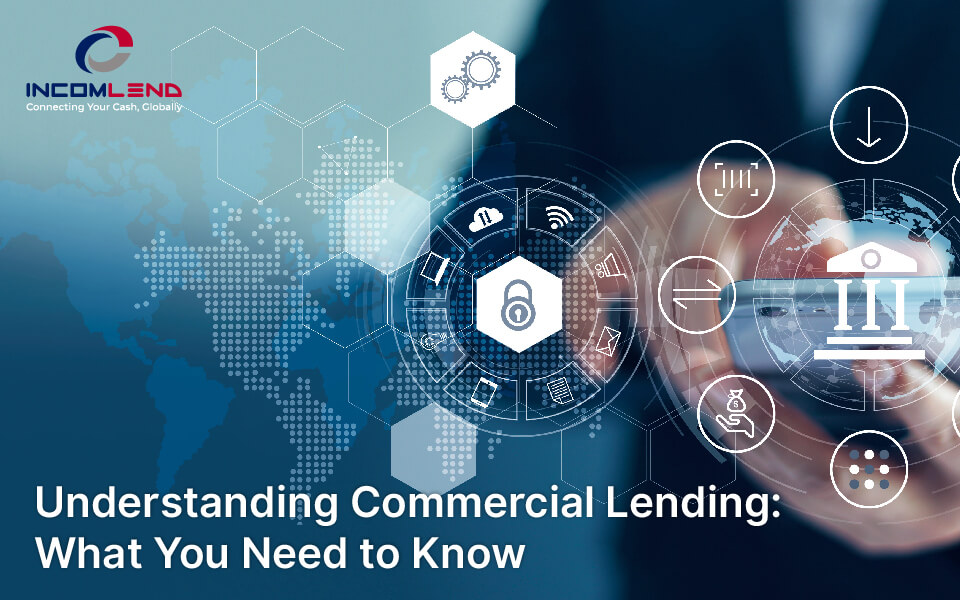Understanding Commercial Lending: What You Need to Know
June 5,2023
Commercial lending plays a vital role in providing businesses with the necessary financial support to fuel their operations, expansion plans and technological advancements. This article aims to provide a comprehensive overview of commercial lending, its various types and the advantages and disadvantages it offers. Additionally, we will highlight the significance of invoice finance as a primary form of commercial lending.
Definition
Commercial lending encompasses a wide range of financial services that cater to the borrowing needs of businesses. It involves providing funds to companies to meet their operational requirements, such as purchasing inventory, expanding facilities, or investing in new technologies. Unlike consumer lending, commercial lending focuses on supporting the growth and development of businesses.
Who Can Access Commercial Lending?
Commercial lending is accessible to a broad range of entities, including small and medium-sized enterprises (SMEs), large corporations, exporters, importers, and institutional and accredited investors. Whether you are a business owner seeking capital or an investor looking to provide funding, commercial lending offers solutions tailored to your specific needs.
Types of Commercial Lending
Business Loans: Business loans are a common form of commercial lending, providing businesses with a lump sum of capital that can be used for various purposes. These loans often require collateral and are subject to repayment terms, interest rates, and credit assessments.
Invoice Financing: Invoice financing, also known as invoice factoring, is a type of commercial lending that focuses on leveraging outstanding invoices for immediate working capital. Companies like Incomlend offer tech-enabled invoice finance solutions, allowing businesses to upload their invoices to a marketplace and receive funding within days.
Equipment Leasing: Equipment leasing provides businesses with the option to rent or lease necessary equipment rather than purchasing it outright. This form of commercial lending allows companies to access advanced machinery and technology without a large upfront investment.
Invoice Finance as a Primary Form of Commercial Lending
Invoice finance is a type of commercial lending that allows businesses to access the cash tied up in their unpaid invoices. This can be a valuable source of funding for businesses that are struggling to meet their short-term cash flow needs.
Invoice finance works by selling unpaid invoices to a third-party finance company. The finance company then pays the business a percentage of the invoice value upfront, with the remaining balance being paid when the invoice is due. This can provide businesses with the cash they need to cover their expenses, make payroll, or invest in growth.
There are a number of benefits to invoice finance, including:
- Quick access to cash: Invoice finance can provide businesses with quick access to cash, which can be essential for meeting short-term cash flow needs.
- Competitive interest rates: Invoice finance typically has competitive interest rates, which can help businesses save money.
- No collateral required: Invoice finance typically does not require collateral, which can be a major advantage for businesses that do not have assets to secure a loan.
If you are a business that is struggling to meet your short-term cash flow needs, invoice finance may be a viable option for you. Contact a commercial lender today to learn more about how invoice finance can help your business.
Advantages of Commercial Lending
Access to Capital: Commercial lending provides businesses with the capital they need to invest in their growth, meet operational expenses, and seize market opportunities. It offers a reliable source of funding that aligns with the unique requirements of each business.
Flexibility: Commercial lending solutions are flexible, allowing businesses to choose the type and amount of financing that suits their specific needs. Whether it’s a short-term bridge loan or a long-term business loan, commercial lending offers tailored options to address different financial situations.
Faster Funding: Invoice financing, in particular, provides businesses with rapid access to working capital by leveraging outstanding invoices. This allows companies to maintain a healthy cash flow and meet their immediate financial obligations.
Disadvantages of Commercial Lending
Interest Rates and Fees: Commercial lending often involves interest rates and additional fees that businesses must consider. It is important to carefully evaluate the terms and conditions of the lending agreement to ensure the cost of borrowing aligns with the expected return on investment.
Credit Assessment: Commercial lending typically involves credit assessments, where lenders evaluate the creditworthiness of the borrowing entity. This can pose challenges for businesses with lower credit scores or limited credit history.
How to Get Started and Access Commercial Lending
To access commercial lending, businesses can follow these steps:
Identify Funding Needs: Determine the specific financial requirements of your business, whether it’s for working capital, equipment acquisition, or expansion plans.
Research Lenders/Providers: Explore different lenders and their offerings to find the most suitable fit for your business. Consider factors such as interest rates, repayment terms, geo-targeted expertise and case studies.
Prepare Documentation: Gather the necessary documentation, including financial statements, tax returns, and business plans, to support your loan application.
Submit Application: Complete the loan application process by submitting the required documents to the chosen lender. Be prepared to answer any additional questions or provide further information as requested.
Conclusion
Commercial lending plays a crucial role in fueling the growth and success of businesses across various industries. Whether through business loans, invoice financing, or equipment leasing, commercial lending offers flexible and tailored solutions to meet the unique financial needs of companies. Understanding the different types of commercial lending and carefully evaluating the advantages and disadvantages can help businesses make informed decisions and secure the funding required to thrive in today’s competitive market.
